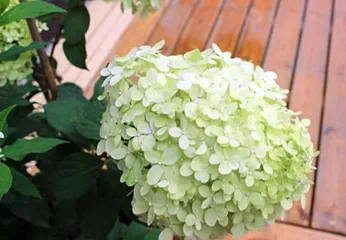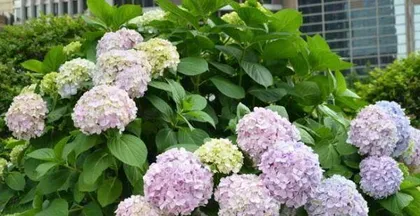Hydrangeas are extremely popular flowering plants. Their flowers are rich in color and beautiful in shape, making them common landscape plants in home gardens and parks. However, to keep these beautiful flowers in our lives for a long time, they require proper care. This article will introduce you to how to care for your hydrangeas, helping you easily master the skills and precautions needed for hydrangea flower arranging.

I: Understanding Hydrangeas
Hydrangeas are a type of shrub, primarily distributed in Asia and Europe, including regions like China, Japan, South Korea, and the United Kingdom. Their flowers come in a rich variety of colors, including white, yellow, pink, purple, blue, and more, and they can bloom for a long time.
II: Selecting a Suitable Growing Environment
Before planting hydrangeas, it's essential to choose a suitable environment for their growth. This location should have ample sunlight, good air circulation, and soft, well-draining soil. In particular, during hot summers, avoid excessive direct sunlight. You can plant them under the shade of trees or on a windowsill.

III: Proper Watering and Fertilization
Hydrangeas require ample water to support their growth and flowering, but they should not be overwatered, as this can lead to root rot. It is recommended to water once a week, ensuring the soil surface is completely dry. For fertilizing, you can use organic fertilizer, applying it once a month is sufficient.
IV: Proper Pruning of Flower Stems
Hydrangeas can grow to a height of 2-3 meters, but if they become too tall, they may not be aesthetically pleasing. It is advisable to prune the flower stems appropriately. The best time to prune is after the flowering season. You can retain some healthy branches and flower buds to maintain the overall shape.
V: Preventing and Treating Pests and Diseases
Hydrangeas are susceptible to various pests and diseases, such as aphids, powdery mildew, and spider mites. You can use some unconventional methods to prevent and treat these issues, such as spraying a water and alcohol solution, garlic water, or tomato leaf juice.

VI: Understanding Hydrangea Arrangement Techniques
Hydrangeas can be used not only for planting but also for flower arranging, creating many beautiful bouquets and wreaths. Before arranging hydrangeas, it's important to learn some techniques, such as selecting mature flowers, the correct cutting angle, appropriate water temperature, and vase selection.
VII: Selecting Mature Flowers
To create beautiful hydrangea arrangements, you need to select mature flowers. This ensures the flowers are vibrant in color, complete in shape, and stay fresh for a long time. It's best to cut the flowers when they are about half-open.
VIII: The Correct Cutting Angle
When cutting the stems, pay attention to the angle. A 30-degree angle is ideal, as it facilitates water absorption and flower growth. It's important to retain some of the stem to avoid negatively impacting the overall arrangement.
IX: Appropriate Water Temperature
Water temperature is another crucial factor that affects the outcome of hydrangea arrangements. It is best to use warm water to soak the flowers. Warm water promotes water absorption, while hot water can damage the blooms. Different water temperatures may be required depending on the specific type of flower material.
X: Vase Selection
The vase is also a vital component of hydrangea arrangements. Choose a vase that complements the flower material and the overall style. It's best to use transparent or light-colored vases, as this allows you to easily observe the condition of the flowers.
XI: Adjusting Flower Stem Positions
When creating hydrangea arrangements, you need to adjust the positions of the flower stems appropriately to maintain the overall aesthetic shape. You can adjust the height, left-right, or front-back positions of the stems as needed, while ensuring the arrangement remains stable overall.
XII: Regularly Changing the Water
Regularly changing the water is an essential practice for hydrangea arrangements. Change the water every 3-4 days. This helps keep the flowers fresh and prevents bacteria from growing in the water.
XIII: Avoiding Direct Sun Exposure
When displaying hydrangea arrangements, avoid placing them in direct sunlight, as this can cause the flowers to change color, deform, or drop. It's best to place them in a well-ventilated indoor environment.
XIV: Maintaining Overall Cleanliness
When creating hydrangea arrangements, it's important to maintain overall cleanliness. You can regularly change the water and wipe the vase and stems. This prevents dust, bacteria, and other contaminants from affecting the freshness of the flowers.
XV:
Through this article, we have learned how to properly care for hydrangeas and have acquired the skills and precautions necessary for creating hydrangea arrangements. We hope everyone will enjoy hydrangeas and appreciate the wonderful life of flowers.